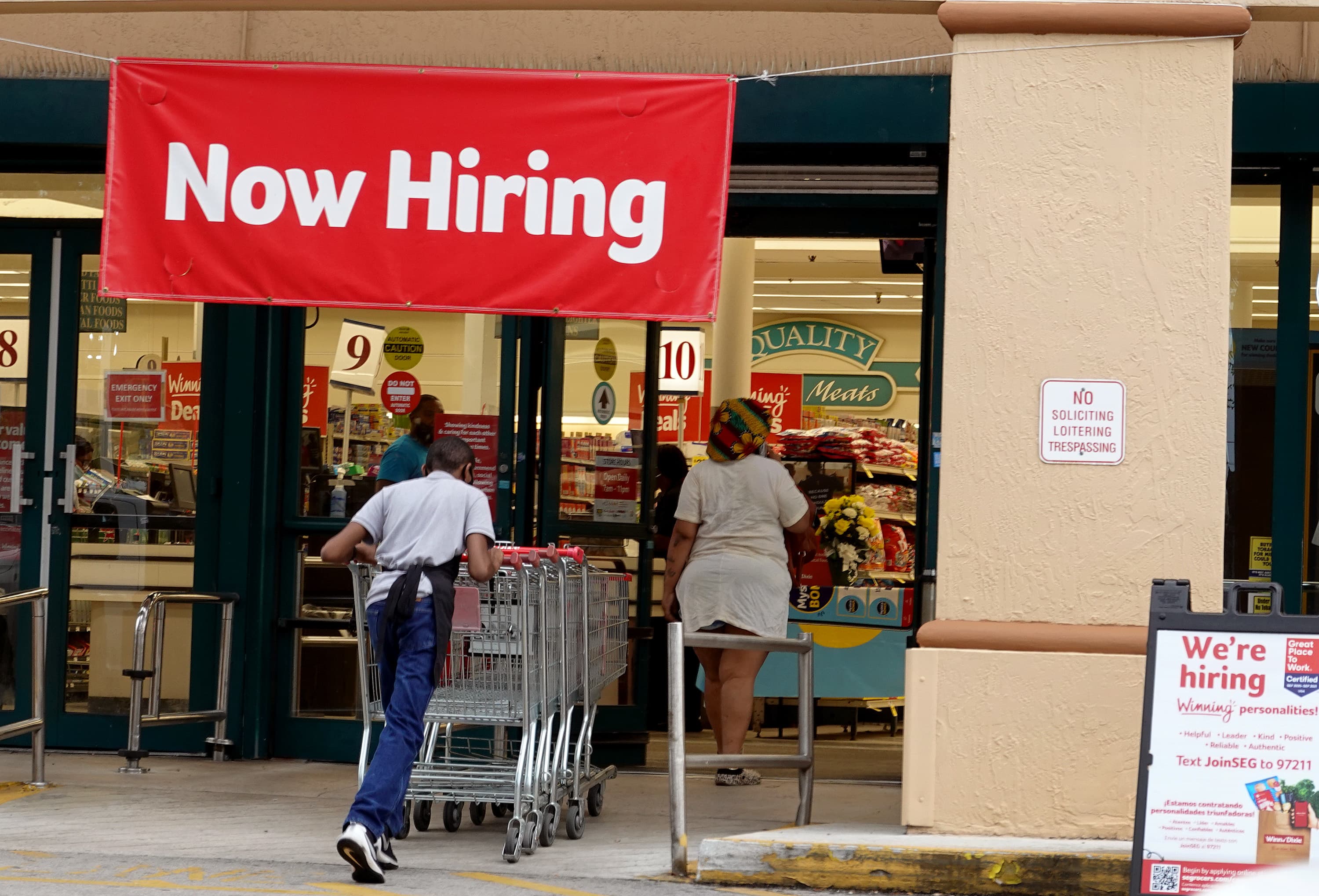Products You May Like
The September jobs report issued Friday offered yet more evidence that pandemic-era unemployment benefits didn’t hold back the labor market in a significant way.
Job growth — 194,000 new payrolls — fell well short of expectations in September and decelerated from prior months. The labor force (a measure that counts workers and those actively looking for a job) shrank by 183,000 from August, according to the Bureau of Labor Statistics.
The data offer the first snapshot of the U.S. labor market since enhanced federal unemployment benefits ended on Labor Day. The September report suggests many workers didn’t find new jobs or jump off the sidelines to look for work, despite the expiration of those benefits.
That Labor Day “cliff” impacted about 8.5 million Americans, according to Labor Department data. More than 2 million others got a $300 weekly benefit reduction.
More from Personal Finance:
Seniors’ group calls for Congress to send $1,400 stimulus checks
Fired for refusing a Covid vaccine? You likely can’t get jobless benefits
Unemployment recipients fell by more than half after Labor Day cliff
Some economists and policymakers believed federal benefits were holding back the recovery. It’s becoming clearer that other factors, especially the Covid delta wave, have played a bigger role in limiting economic activity, according to labor experts.
“All the evidence points toward pandemic [unemployment benefits] not being the main factor,” according to Nick Bunker, economic research director for North America at the Indeed Hiring Lab. “The best estimate right now is that it’s the pandemic itself.
“This is still a delta-wave-era jobs report,” Bunker added.
Muted role
The September jobs report is the latest evidence of the muted role enhanced federal benefits played. Those benefits included a $300 weekly supplement, and aid for groups that don’t typically qualify for state assistance, like gig workers and the long-term unemployed.
Twenty-six state governors, all Republican but one, moved to withdraw from the programs early, in June or July, to nudge people back into the labor market.
However, economic analyses found the withdrawals didn’t provoke the intended job rush. Some even found negative effects.
“In fact, we find that the loss of benefits is associated with a modest decline in employment growth, earnings growth and labor force participation,” Peter McCrory, an economist at JPMorgan Chase Bank, wrote in a research note last month.
The Labor Day cutoff affected more people than the June-July batch, since it included high-recipiency states like California and New York. Some economists had expected there might be a more pronounced impact after Labor Day as a result — which hasn’t yet materialized.
While any positive impacts on job growth have been “relatively muted” so far, that may change later this year and as households deplete any built-up savings, according to Daniel Zhao, senior economist at job site Glassdoor.
“Ultimately, the September report will not be the final word in the debate over the impact of [unemployment insurance] benefits,” Zhao said.
That said, the jobs report was broadly seen Friday morning as a letdown after surging job growth over the spring and early summer.
Job growth in the private-sector averaged 488,000 in the three-month period through September. That’s a significant slowdown from recent months — job growth averaged 652,000 and 726,000 for the three months ended in August and July, respectively.
“As shocking as today’s employment figures are, even more troubling is the decline in the labor force,” said Neil Bradley, executive vice president and chief policy officer at the U.S. Chamber of Commerce. “We are in the midst of a worker shortage crisis and the number of potential workers is shrinking.”
